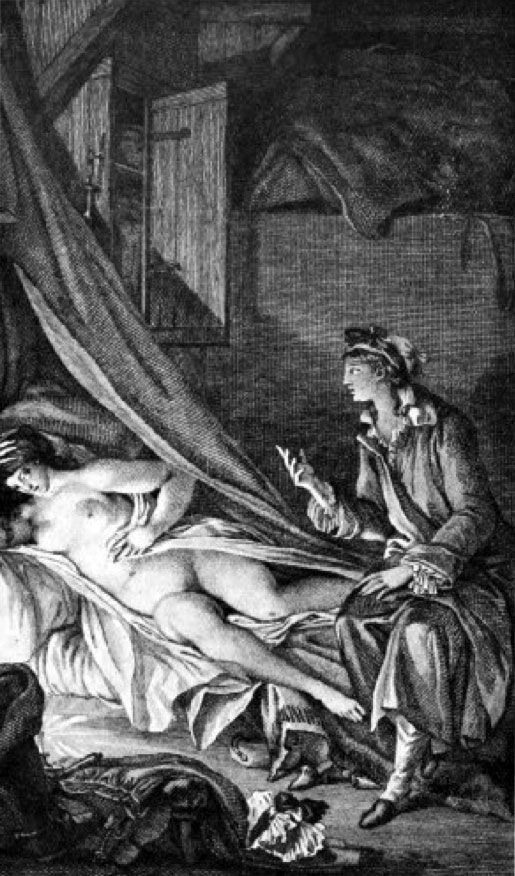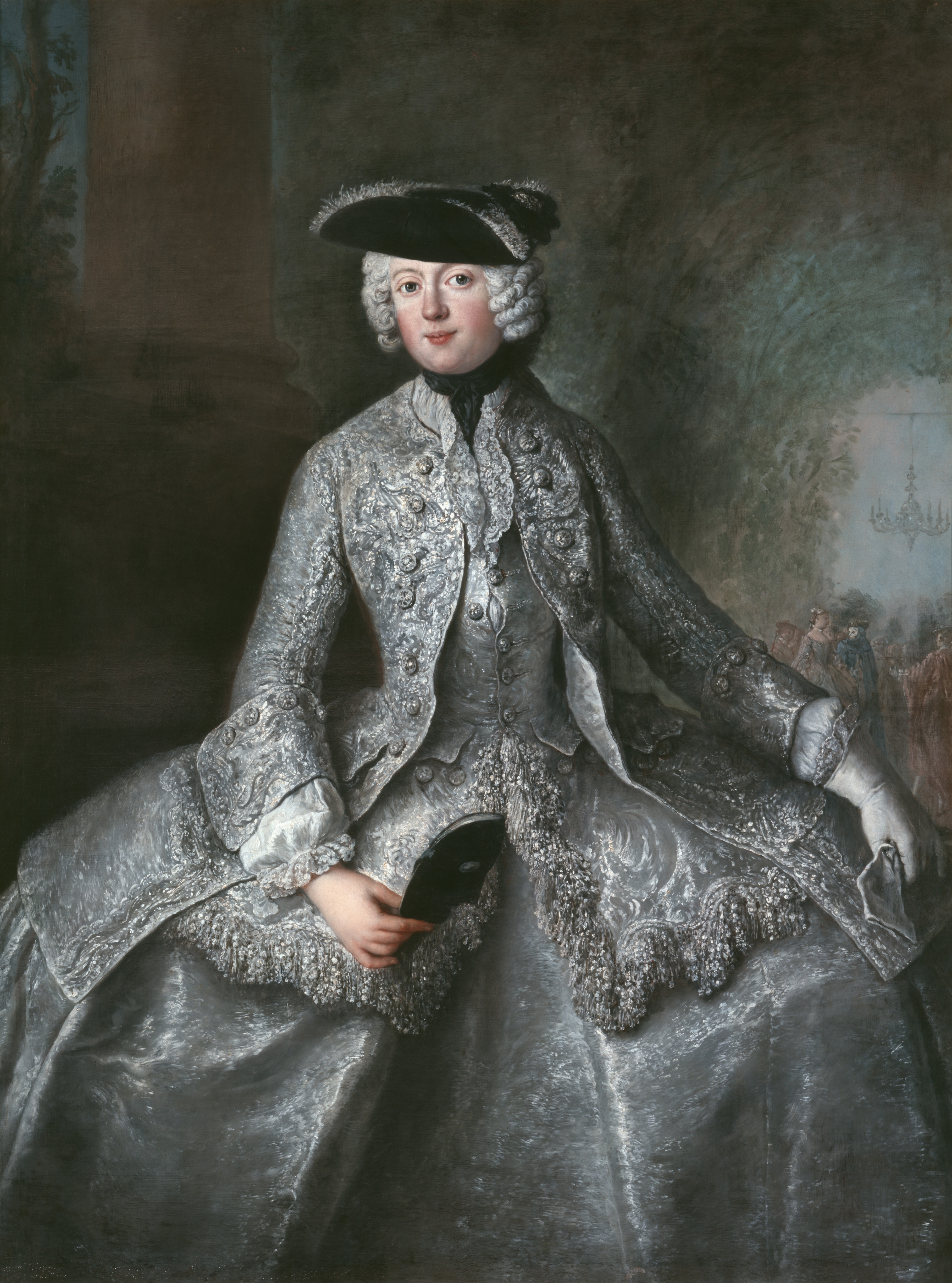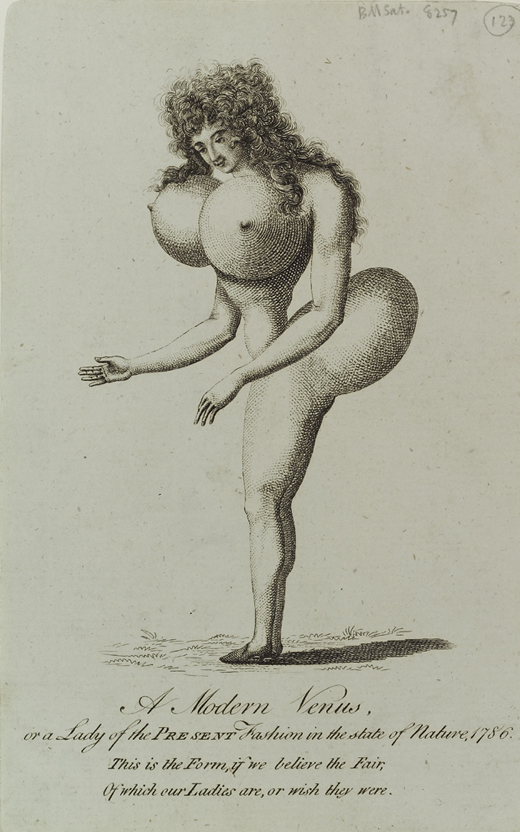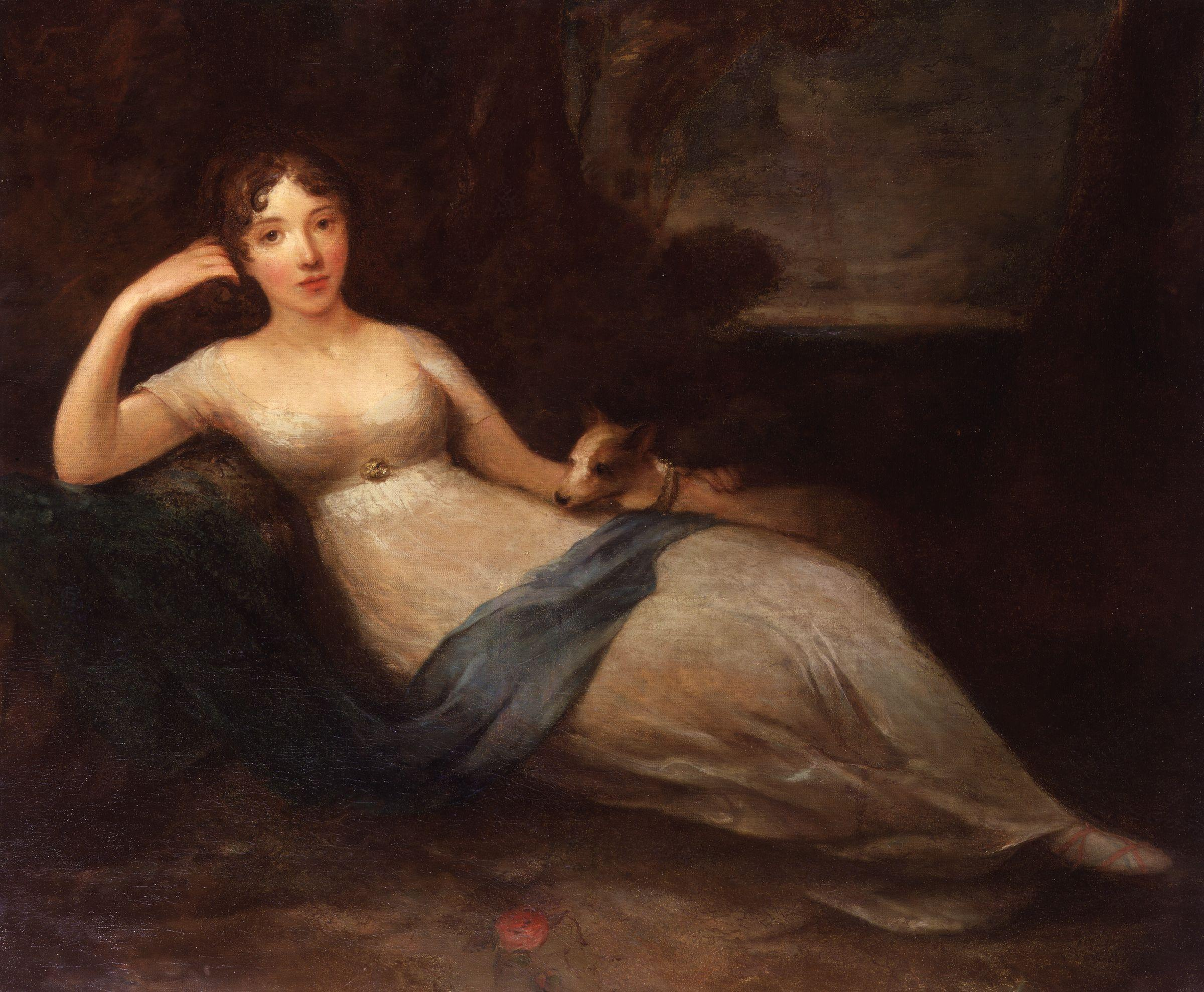
Location: Bedfordshire
Famous Inhabitants: John, Earl of Brute
Website: http://www.lutonhoo.co.uk/

 Lauren at American Duchess emailed me to alert me to a giveaway that just may interest you. But then again, who doesn't enjoy a good giveaway! She just launched her own clothing brand, American Duchess, and to celebrate, is giving away a t-shirt from the newly begun line to one lucky reader. Check out her blog for details. In the meantime you can check out her other products in Etsy, including my personal fav, a shirt that just screams 'Foxite!'
Lauren at American Duchess emailed me to alert me to a giveaway that just may interest you. But then again, who doesn't enjoy a good giveaway! She just launched her own clothing brand, American Duchess, and to celebrate, is giving away a t-shirt from the newly begun line to one lucky reader. Check out her blog for details. In the meantime you can check out her other products in Etsy, including my personal fav, a shirt that just screams 'Foxite!'

 I know we often think of pilgrims and Native Americans when Thanksgiving rolls around, but let's give it a colonial perspective this year. After the original Thanksgiving in 1621, other thanksgivings would be held by various communities throughout the year. These celebrations of thanks usually marked a military victory and were more about reflection than stuffing bellies. It wasn't until 1777 that the colonies celebrated a nationwide thanksgiving. This thanksgiving, proclaimed by General George Washington and backed by the Continental Congress, was held in December to give thanks for the defeat of British troops at Saratoga, New York.
I know we often think of pilgrims and Native Americans when Thanksgiving rolls around, but let's give it a colonial perspective this year. After the original Thanksgiving in 1621, other thanksgivings would be held by various communities throughout the year. These celebrations of thanks usually marked a military victory and were more about reflection than stuffing bellies. It wasn't until 1777 that the colonies celebrated a nationwide thanksgiving. This thanksgiving, proclaimed by General George Washington and backed by the Continental Congress, was held in December to give thanks for the defeat of British troops at Saratoga, New York.Whereas it is the duty of all Nations to acknowledge the providence of Almighty God, to obey his will, to be grateful for his benefits, and humbly to implore his protection and favor, and whereas both Houses of Congress have by their joint Committee requested me "to recommend to the People of the United States a day of public thanksgiving and prayer to be observed by acknowledging with grateful hearts the many signal favors of Almighty God especially by affording them an opportunity peaceably to establish a form of government for their safety and happiness.And thus, the November holiday was born. Another one was proclaimed by Washington in 1795, and then President Adams continued the tradition. It was that slacker, Thomas Jefferson who would let it totally slip his mind. Various presidents would continue to proclaim the holiday, and various states had it in their law books to observe it on a specific date. It wasn't until 1941 that Thanksgiving was had a designated annual date to celebrate.
Now therefore I do recommend and assign Thursday the 26th day of November next to be devoted by the People of these States to the service of that great and glorious Being, who is the beneficent Author of all the good that was, that is, or that will be. That we may then all unite in rendering unto him our sincere and humble thanks, for his kind care and protection of the People of this Country previous to their becoming a Nation, for the signal and manifold mercies, and the favorable interpositions of his providence, which we experienced in the course and conclusion of the late war...
 Calling all makeup junkies! I received an email from MAC cosmetics (I signed up for the free shipping) about their newest collection which I just have to share. It's called Baroque Boudoir and this fabulous collection has just been unleashed today. How I would love to get my hands on that powder and the pink lipstick! I'm not just saying that because the packaging is fabulous either! Ah well! The holidays are nigh, so you might just want to add this to your wish list, perhaps some rake would lovingly bestow it on you.
Calling all makeup junkies! I received an email from MAC cosmetics (I signed up for the free shipping) about their newest collection which I just have to share. It's called Baroque Boudoir and this fabulous collection has just been unleashed today. How I would love to get my hands on that powder and the pink lipstick! I'm not just saying that because the packaging is fabulous either! Ah well! The holidays are nigh, so you might just want to add this to your wish list, perhaps some rake would lovingly bestow it on you.
 Royal, Augusta, Elizabeth, Mary, Sophia, and Amelia; these were the six daughters of King George III and Queen Charlotte. It's easy to get lost among the fifteen children of the king and queen but in Princesses: The Six Daughters of George III
Royal, Augusta, Elizabeth, Mary, Sophia, and Amelia; these were the six daughters of King George III and Queen Charlotte. It's easy to get lost among the fifteen children of the king and queen but in Princesses: The Six Daughters of George III

 Before we had Glenn Close to exercise her great acting skills in the film, Dangerous Liaisons, there was the novel, Liaisons Dangereuses by Pierre Choderlos. The book was published in multiple volumes in 1782 and was popular due to the scandalous content. Of course the content was probably only scandalous to those who weren't aware of just how true to life it could be!
Before we had Glenn Close to exercise her great acting skills in the film, Dangerous Liaisons, there was the novel, Liaisons Dangereuses by Pierre Choderlos. The book was published in multiple volumes in 1782 and was popular due to the scandalous content. Of course the content was probably only scandalous to those who weren't aware of just how true to life it could be!


 As every good Janeite* is probably aware, The Morgan Library in New York City is currently having an exhibition titled, A Woman's Wit: Jane Austen's Life and Legacy. I had the opportunity to see this once in a lifetime display, and Janeites, I was not disappointed!
As every good Janeite* is probably aware, The Morgan Library in New York City is currently having an exhibition titled, A Woman's Wit: Jane Austen's Life and Legacy. I had the opportunity to see this once in a lifetime display, and Janeites, I was not disappointed! et his hands on anything Jane touched. For years Mr. Morgan searched for original manuscripts and was told more than once that these had all been destroyed. He was finally able to acquire the manuscript to Lady Susan as well as a partial one to an unpublished work. It is these side stories about how Jane Austen's work that affect other's peoples lives that is part of A Woman Wit.
et his hands on anything Jane touched. For years Mr. Morgan searched for original manuscripts and was told more than once that these had all been destroyed. He was finally able to acquire the manuscript to Lady Susan as well as a partial one to an unpublished work. It is these side stories about how Jane Austen's work that affect other's peoples lives that is part of A Woman Wit. a print of William Blake's portrait of Mrs. Q which Jane saw and reported to her sister that it was how she pictured Jane in Pride and Prejudice. I also am always entertained/tortured by letters censured by prudish Victorian relatives. One letter is censored right as Austen is about to describe Edward Bertrum. Fill in the blank here: I find Edward to be...
a print of William Blake's portrait of Mrs. Q which Jane saw and reported to her sister that it was how she pictured Jane in Pride and Prejudice. I also am always entertained/tortured by letters censured by prudish Victorian relatives. One letter is censored right as Austen is about to describe Edward Bertrum. Fill in the blank here: I find Edward to be... Ever wonder why you are such a good friend, tight with your money, or very religious? Well Franz Joseph Gall has an answer for you! It's all due to the shape of your head.
Ever wonder why you are such a good friend, tight with your money, or very religious? Well Franz Joseph Gall has an answer for you! It's all due to the shape of your head. Sorry to interrupt your usual Sunday critique. For those who are interested, Lauren and I are on a joint exhibition venture in New York City today. There is just too many art exhibitions to do with the long eighteenth century to pass up!
Sorry to interrupt your usual Sunday critique. For those who are interested, Lauren and I are on a joint exhibition venture in New York City today. There is just too many art exhibitions to do with the long eighteenth century to pass up!

 The Duke was in a loveless marriage and much older than Lavinia but that wouldn't stop the two from shacking up. Nor would Lavinia let shacking up get in the way of her career. It was her performance as Polly Peachum in The Beggar's Opera that earned Lavinia the most success. It also earned her a depiction in a Hogarth painting portraying the play. Now Lavinia was a full-out star: the papers followed her, prints were made of her, and she became the reason people would see the play.
The Duke was in a loveless marriage and much older than Lavinia but that wouldn't stop the two from shacking up. Nor would Lavinia let shacking up get in the way of her career. It was her performance as Polly Peachum in The Beggar's Opera that earned Lavinia the most success. It also earned her a depiction in a Hogarth painting portraying the play. Now Lavinia was a full-out star: the papers followed her, prints were made of her, and she became the reason people would see the play. The 1780s saw an extreme change in high fashion for the ladies. The 1770s was marked with high hair towers and robe a la francaises. A dramatic change followed, with clothing veering toward leisure and comfort. Hair finally became so high the only new thing to do with it was to grow it out horizontally in loose curls. Women dismissed their panniers and opted for the false rump, the predecessor to the bustle.
The 1780s saw an extreme change in high fashion for the ladies. The 1770s was marked with high hair towers and robe a la francaises. A dramatic change followed, with clothing veering toward leisure and comfort. Hair finally became so high the only new thing to do with it was to grow it out horizontally in loose curls. Women dismissed their panniers and opted for the false rump, the predecessor to the bustle. with fashion. They conceived having not only false fronts but false stomachs which disguised pregnancies. The trend caught on, much to the shock of satirical artists. Chests were also emphasized with pads and a multi-layered fichu called a 'buffon.' Although the robe a la francaise was still worn for formal events this 'more natural' was the outfit of choice for the day and a favourite of Georgiana.
with fashion. They conceived having not only false fronts but false stomachs which disguised pregnancies. The trend caught on, much to the shock of satirical artists. Chests were also emphasized with pads and a multi-layered fichu called a 'buffon.' Although the robe a la francaise was still worn for formal events this 'more natural' was the outfit of choice for the day and a favourite of Georgiana.
 Now there have been rumors forever about how many baths Marie Antoinette took a year and the amount of powder used to cover unpleasant scents. That leads me to believe the 18th century had a reputation for being quite stinky! And the truth is...yeah, it kind of was. But the reason we know that is because contemporaries of the time would describe, in detail, how bad certain individuals smelled. I suppose that means, not everyone smelled bad! Yes there was glitz and glam, but that came with the use of a lot of glitter and what lay underneath could be quite repulsive.
Now there have been rumors forever about how many baths Marie Antoinette took a year and the amount of powder used to cover unpleasant scents. That leads me to believe the 18th century had a reputation for being quite stinky! And the truth is...yeah, it kind of was. But the reason we know that is because contemporaries of the time would describe, in detail, how bad certain individuals smelled. I suppose that means, not everyone smelled bad! Yes there was glitz and glam, but that came with the use of a lot of glitter and what lay underneath could be quite repulsive. BibliOdyssey had a great post a while ago on satires of hair towers. I think I spread word about it on Twitter (but I'm a scramble-brain, so maybe I didn't!) which I know not everyone follows. However, I've had multiple people email me about the post so that tells me I must do a better job about spreading the word and give the fabulous post the recognition it deserves.
BibliOdyssey had a great post a while ago on satires of hair towers. I think I spread word about it on Twitter (but I'm a scramble-brain, so maybe I didn't!) which I know not everyone follows. However, I've had multiple people email me about the post so that tells me I must do a better job about spreading the word and give the fabulous post the recognition it deserves.

 I finally had the opportunity of seeing the classic film, That Hamilton Woman (aka Lady Hamilton) starring Vivien Leigh and Laurence Olivier. The 1941 British film has only recently been re-released and is now available on DVD, or in my case on TCM, what luck!
I finally had the opportunity of seeing the classic film, That Hamilton Woman (aka Lady Hamilton) starring Vivien Leigh and Laurence Olivier. The 1941 British film has only recently been re-released and is now available on DVD, or in my case on TCM, what luck! arrival in Naples. You know how it goes; teenage Emma gets dumped with Sir William, they marry, she meets Nelson, they fall in love and conduct their affair in front of everyone.
arrival in Naples. You know how it goes; teenage Emma gets dumped with Sir William, they marry, she meets Nelson, they fall in love and conduct their affair in front of everyone. early 40s movie fashions you will not be disappointed, but otherwise they didn't even try to be accurate like they did in the 1938 Marie Antoinette. I was even delighted to see that Georgiana's brother plays a role and, of course, wears a Spencer!
early 40s movie fashions you will not be disappointed, but otherwise they didn't even try to be accurate like they did in the 1938 Marie Antoinette. I was even delighted to see that Georgiana's brother plays a role and, of course, wears a Spencer!
 Antoine Watteau, 1717
Antoine Watteau, 1717 Fancois Boucher, 1742
Fancois Boucher, 1742 Francois Boucher, 1758
Francois Boucher, 1758 Louis Leopald Boilly
Louis Leopald Boilly Michel Garnier, 1796
Michel Garnier, 1796
